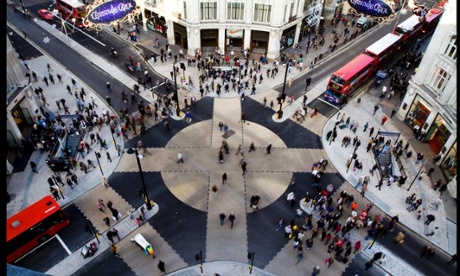
Navigating a mega-city like London on foot can be a fraught experience no matter who you are. But as a sighted person living in a sighted world, it’s nearly impossible to imagine what that experience can be like with a visual impairment.
Take, for example, the ubiquitous pedestrian crossing. While many in London are outfitted with tactile pavements to indicate where to cross and a protruding “cone” device at the bottom of the control box, it can easily take a blind person 10 seconds to orient themselves enough to safely enter the street. In that time, dozens of sighted Londoners may have already crossed the street without giving it much thought.
A variety of tech-fuelled solutions are now enabling the visually impaired to experience their world in a more customised, intuitive, and independent way, by creating solutions that are low cost and accessible to the roughly two million Britons living with some form of visual impairment.
Before developing his project Neatebox a few years ago, Gavin Neate formerly worked for Guide Dogs for the Blind helping visually impaired individuals adjust to their guide dogs. After learning how blind people experienced the world, he recognised a problem with the conventional way that they interact with crosswalks. His idea – which was recently short listed for the Virgin Media Pioneers’ Innovation Award – uses something similar to iBeacon technology to enable a blind person to interact with a control box wirelessly, via an app on their phone.
“The world we all live in has been designed by the sighted and for the sighted,” Neate said. “I needed to be able to convey the crossing information to the person when they were at the ideal crossing point on the pavement, which meant I needed something wireless. I also didn’t want to add an extra piece of kit to carry around, like a key fob.”
Neate oversaw the creation of both a software app for a smartphone – which uses existing accessibility options such as iPhone’s Voiceover or Samsung’s TalkBack – and a hardware device that can be installed on the control box of a crosswalk. The device was piloted in Edinburgh with support from Transport Scotland and Neate is currently pitching it to product developers and other councils and cities to address the needs of both visually impaired and disabled people.
A similar idea is London’s Wayfindr app, in prototype phase, which was developed in partnership with the Royal London Society for the Blind’s (RLSB) Youth Forum and ustwo, a product design studio. Also utilising iBeacon technology, the app triangulates the user’s position using their smartphone and then transmits instructions audibly, based on where the user wants to go. It is specifically targeted at London’s roughly 9,000 youth who are visually impaired who report they often suffer from a sense of lack of independence if they can’t navigate public transport on their own.
Tom Pey, CEO at RLSB, who is himself registered blind, explained why using existing technology is so important. “In a world where technology develops so quickly, it is important to ensure that we explore simple solutions using everyday technologies, rather than complex solutions which could come at high cost to the end user, and may be obsolete as technology moves forwards.”
Another tech solution to visual impairment, coming from MIT’s Media Lab, addresses the fact that as technology advances, people are spending more and more time on tablets and digital devices. While trying to develop 3D screens that can be watched without special glasses, co-creator Gordon Wetzstein said he stumbled on the potential for another major solution.
Not designed specifically for blind people, but rather anyone with minor to major visual impairments, a prototype for vision correcting displays for e-readers, tablets or laptops has been developed by Wetzstein and his colleagues. In theory, he says, much more severe impairments could be corrected for using this technology. It works by repurposing some of the individual pixels in a display or, as Wetzstein put it, “hacking the pixels to give the user a better experience.”
Wetzstein says the technology can now be used in the form of a protective sleeve or cover glass, but that he hopes eventually to see display manufacturers seamlessly integrate it into the technology so a user can adjust a slider on their phone, tablet, or computer to reach their ideal resolution.
Neate says that in general, to make life easier for visually impaired people, it’s essential to consider their requirements from the inception of the design process, rather than as an afterthought.
“Currently, to address the needs of visually impaired and disabled people, we’re retrofitting everything,” Neate said. “When you retrofit, you ruin the design as far as the vision of the architect is concerned. On the other hand, if you design it from the beginning for the people that need it the most, you design it for everybody.”
- Advertisement feature: Will 2014 be the year of telehealth?
- Telling stories about ourselves through big data and wearable technology
- How social media can help improve and redesign transport systems
The technology and innovation hub is funded by BT. All content is editorially independent except for pieces labelled advertisement feature. Find out more here.
Join the community of sustainability professionals and experts. Become a GSB member to get more stories like this direct to your inbox

